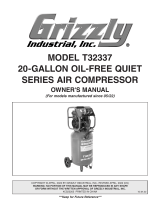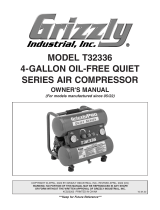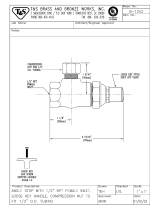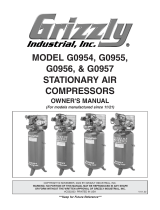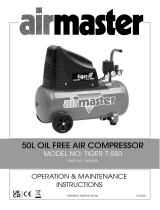
7. KEEP CHILDREN AND VISITORS
AWAY.
8. MAKE WORKSHOP CHILD PROOF.
9. NEVER LEAVE UNATTENDED
TOOL CONNECTED TO AIR.
10. DO NOT USE IN DANGEROUS
ENVIRONMENTS.
11. KEEP WORK AREA CLEAN AND
WELL LIT.
12. USE A GROUNDED EXTENSION
CORD RATED FOR THE MACHINE
AMPERAGE.
13. ONLY ALLOW TRAINED AND
PROPERLY SUPERVISED PER-
SONNEL TO OPERATE MACHIN-
ERY.
14. MAKE SURE GUARDS ARE IN
PLACE AND WORK CORRECTLY
BEFORE USING MACHINERY.
15. CHECK FOR DAMAGED PARTS
BEFORE USING MACHINERY.
16. REMOVE ADJUSTING KEYS AND
WRENCHES.
ON
17. REDUCE THE RISK OF
UNINTENTIONAL FIRING.
18. USE PROPER AIR HOSE
19. DO NOT FORCE MACHINERY.
20. DO NOT OVERREACH.
21. SECURE WORKPIECE.
22. USE SUGGESTED ACCESSORIES.
23. MAINTAIN MACHINERY WITH
CARE.
24. ALWAYS DISCONNECT FROM
POWER SOURCE BEFORE
SERVICING MACHINERY.
25. DISCONNECT PNEUMATIC TOOLS
FROM COMPRESSOR
26. BE AWARE THAT CERTAIN
WOODS MAY CAUSE ALLERGIC
REACTIONS IN PEOPLE AND
ANIMALS, ESPECIALLY WHEN
EXPOSED TO FINE DUST.




















